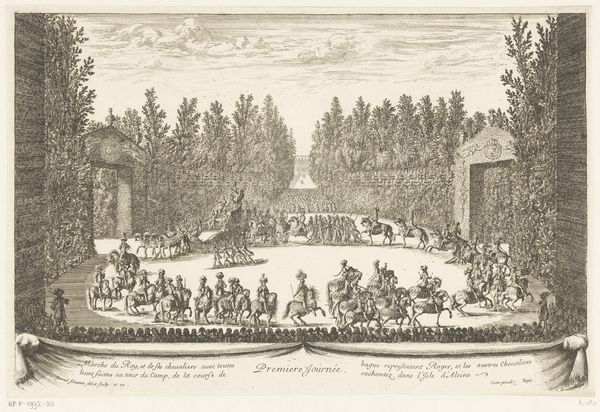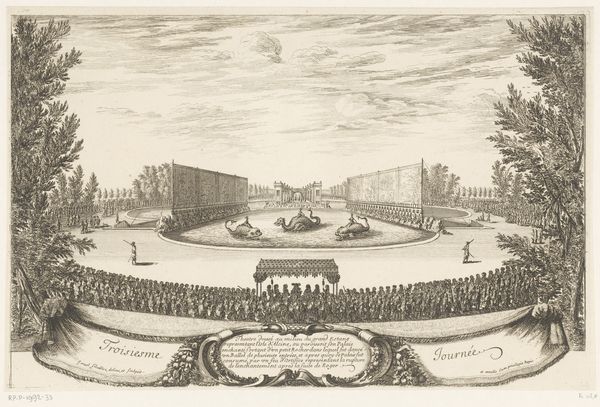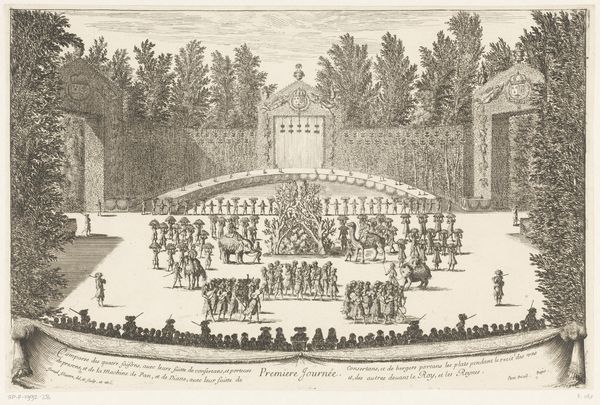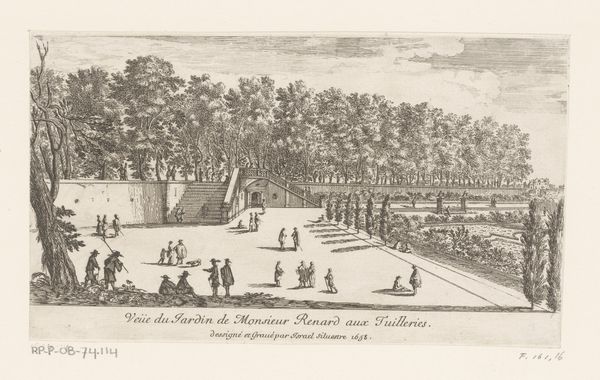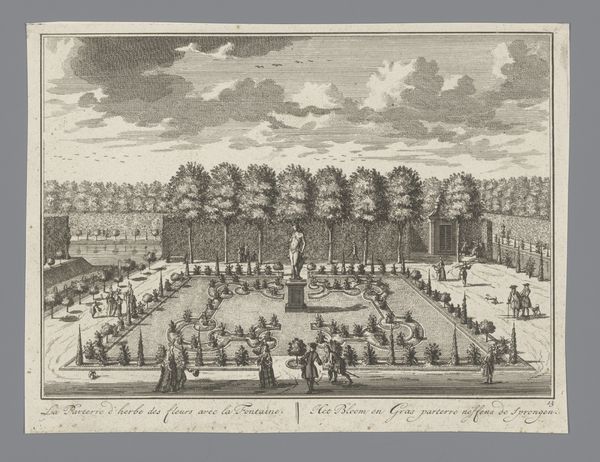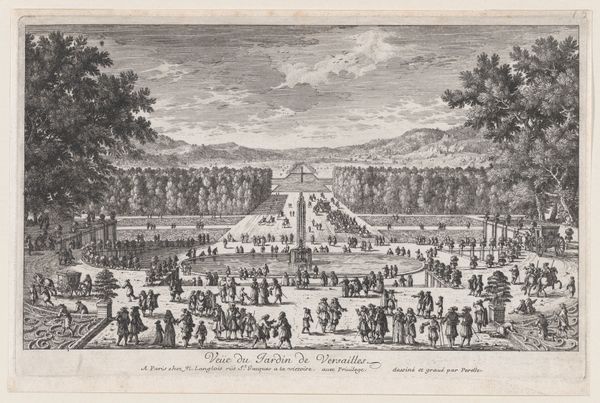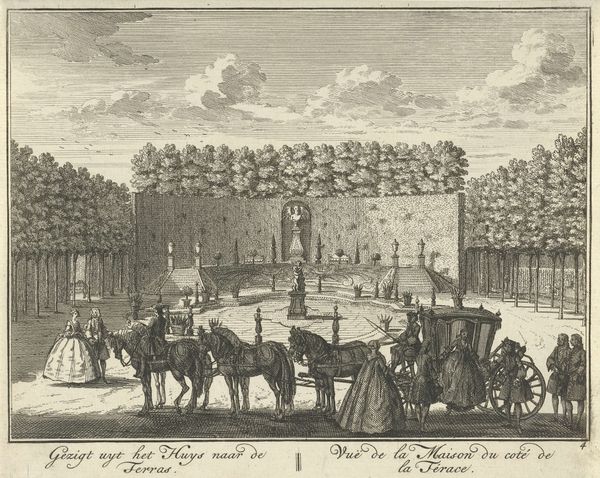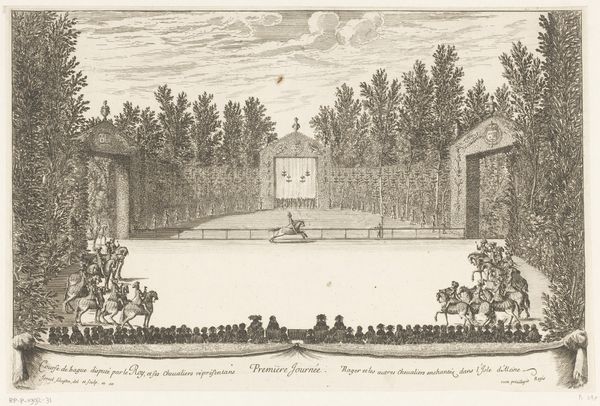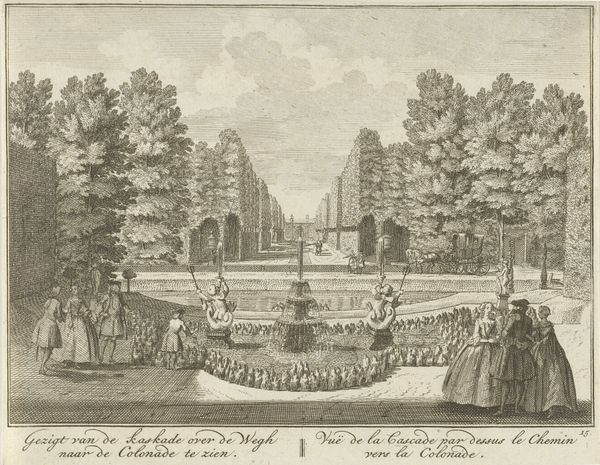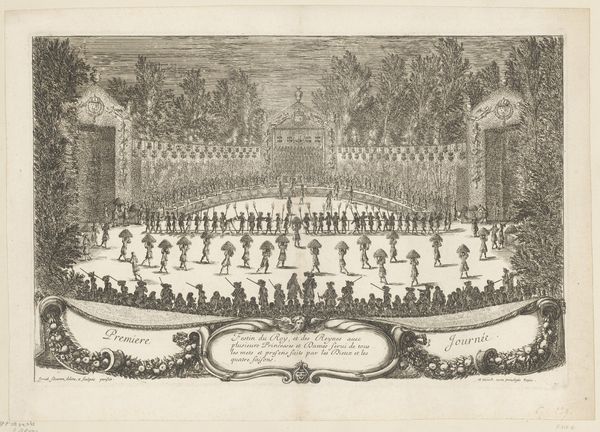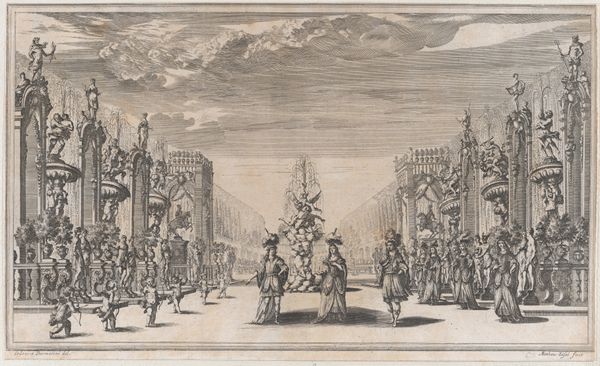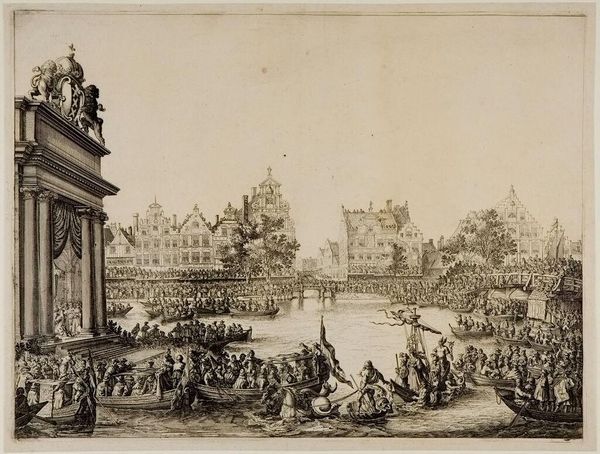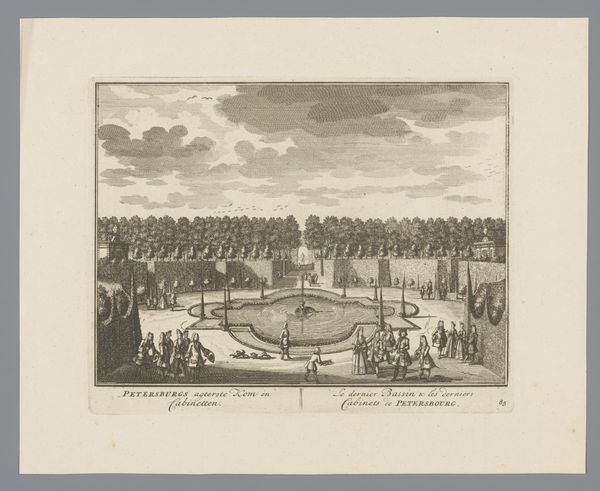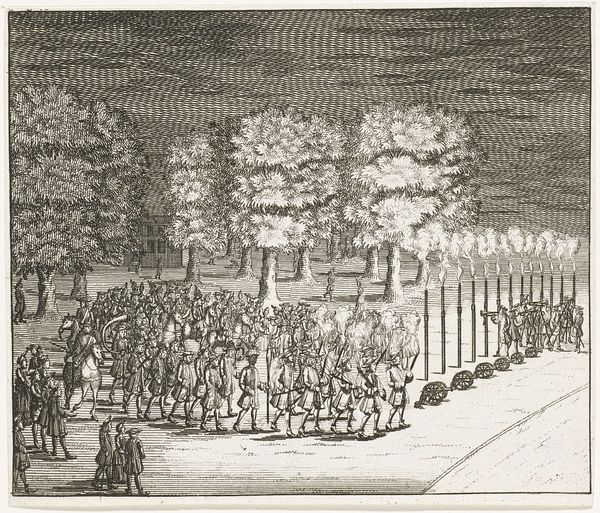
Opvoering van ruiters tijdens de opening van de feestelijkheden op Versailles Possibly 1664 - 1667
0:00
0:00
drawing, print, ink, engraving
#
drawing
#
baroque
# print
#
landscape
#
figuration
#
ink
#
line
#
cityscape
#
history-painting
#
engraving
Dimensions: height 278 mm, width 424 mm
Copyright: Rijks Museum: Open Domain
Curator: Look at this print, "Opvoering van ruiters tijdens de opening van de feestelijkheden op Versailles," possibly from 1664-1667, by Israel Silvestre. Editor: My first impression is the incredible order. The landscape is rigid, formalized, and the figures echo that sense of precise arrangement. Curator: Exactly. Let's think about the printmaking process itself. Silvestre, the engraver, used line work to meticulously convey the extravagance of the court. He likely wasn’t even present; the engraving is a record manufactured for distribution. The choice to produce this event in print extends Louis’s influence through reproducible image making. Editor: The visual symbolism is overt. The entire event, documented here, presents the Sun King—Louis XIV—as a divinely ordained figure. He's staging not just a spectacle but a self-coronation. Look at the chariot of Apollo...a calculated act of image management, aligning himself with the god of light and reason. Curator: The materiality of the image itself—ink on paper, widely distributed—is crucial to understanding its purpose. This wasn’t just about witnessing the event; it was about manufacturing an image, controlling a narrative, and distributing the power of the monarchy. Who actually made this engraving also matters. Where was Silvestre trained, and for what purpose? Who funded its creation and its circulation? Editor: It does make you wonder how those viewing it—who would likely never step foot in Versailles—perceived such opulence and carefully curated symbolism. Curator: Or more practically, how they used this imagery! Perhaps this print informed the style of a minor noble's gardens. This aesthetic and all its ideological implications trickled down through such distributions. Editor: Precisely. The act of disseminating symbols through prints helped consolidate and perpetuate a very particular idea of kingship and national identity. The very lines feel sharp with power. Curator: It shifts the focus from the king himself to the industrial capacity behind it, underscoring that power relies on a coordinated material production. Editor: Looking at it from this perspective, it underscores the resonance of the imagery then—and the long life it had afterwards.
Comments
No comments
Be the first to comment and join the conversation on the ultimate creative platform.
